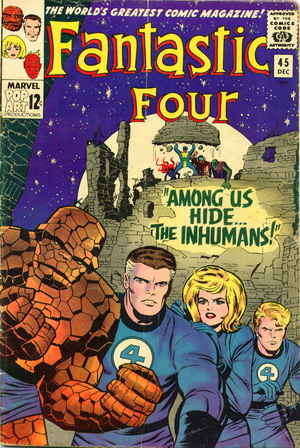
Published: December, 1965
Script: Stan Lee
Pencils: Jack Kirby
Inks: Joe Sinnott
Letters: Artie Simek
One thing I’ve always appreciated in literature and entertainment is the concept of irony, and Marvel Comics is no exception. So it does not escape my attention that in this issue, which introduces the IN-Humans, the spigot of human emotion is turned on full blast.
We start with Dragon Man, who is at the center of so much of this emotion. Dragon Man is not one of the Inhumans, but because he is a robot, he should therefore be free from human emotion. Yet he is tamed by Sue because he has the mentality of a child—and who is more emotional than a child? Despite the fact he is a robot, we are presented with the idea that Dragon Man, essentially, sees Sue as the mother he never had (and what could be more emotional than that?)
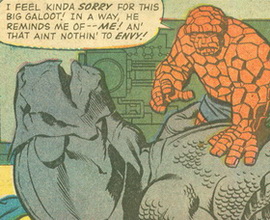 THING AND DRAGON MAN
THING AND DRAGON MAN
On one level, I see Dragon Man as more of a pet than a child (a pet that wears underwear). When Thing first interacts with Dragon Man, he shows impatience, as one might with a dog that will not heel, but finally realizes how alike he and Dragon Man are. They are both large, ugly, and misunderstood. Thing feels sorry for Dragon Man; he empathizes with him. Dragon Man reminds Thing of himself; since he is now perpetually “Thing,” never again to appear as Ben Grimm, he no longer feels human. Yet the irony is that he feels this sorrow, this empathy, this self-pity, proving beyond a doubt his true humanity.
BREAK UP AND REBOUND
Next we visit Johnny and Doris, that volatile teenage couple who at last appear to be breaking up for good. When Johnny decides to call her to say “Hi Dorrie…honey!” he learns that Dorrie now has a new boyfriend. This should be an emotional blow for Johnny, yet he doesn’t care.
 So…what’s happening here? What is Stan telling us? Is he implying that Johnny is an emotionally repressed male, minimizing his response to devastating personal news? A little bit of sour grapes, maybe? Or is Johnny at last delighted to throw off the Dorrie Evans baggage, looking forward to a more exciting romantic rendezvous with a new conquest? Either way, how absolutely human!
So…what’s happening here? What is Stan telling us? Is he implying that Johnny is an emotionally repressed male, minimizing his response to devastating personal news? A little bit of sour grapes, maybe? Or is Johnny at last delighted to throw off the Dorrie Evans baggage, looking forward to a more exciting romantic rendezvous with a new conquest? Either way, how absolutely human!
If Stan is indeed finally writing out Doris, I’m no more broken up about it than Johnny. I never understood what he saw in her, and I’m glad he is at last free to move on.
And teenage stud Johnny wastes no time testing the waters! He’s barely hung up the phone with Doris when he glimpses the beautiful Crystal and is instantly enamored. Well, she is quite striking, lurking in alleyways with her mane of long red hair and slinky white dress. 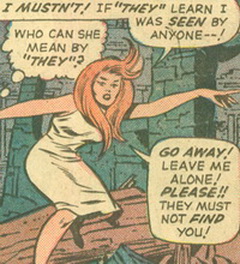 I don’t blame Johnny for being intrigued, even before he learns of her supernatural tendencies.
I don’t blame Johnny for being intrigued, even before he learns of her supernatural tendencies.
But here’s where things could get interesting. In the last several issues, it seemed some sparks were beginning to fly between Torch and Medusa, and now we learn that the beautiful Crystal is actually Medusa’s younger sister, and a much more appropriate match for Johnny. How awkward! Is this the beginning of a love triangle? A love triangle where two of the points are not “human” at all, but rather “Inhuman”? This may all be taking place merely in my imagination, and Marvel may not go anywhere with it, but at this moment I see so much delightful potential for very human soap opera.
AUDIENCE REACTION
But how exciting was all this for the readers in 1966? Sure, in this issue there’s a lot of new information coming all at once, not only about a whole stable full of new characters, but also an entirely new wing of the Marvel Universe. In Dark Shadows, 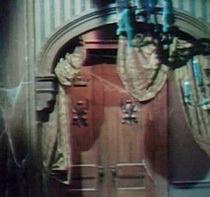 the inhabitants of Collinwood were forever wandering into the West Wing for spooky adventures, but what if someone had suddenly decided to pry open the door to the South Wing and…KABOOM! Even more crazy things going on in that house that no one ever suspected! It’s like that. I imagine it might have been overwhelming for the readers of 1966 to get so much new information all at once, but I’ve no doubt they were not complaining.
the inhabitants of Collinwood were forever wandering into the West Wing for spooky adventures, but what if someone had suddenly decided to pry open the door to the South Wing and…KABOOM! Even more crazy things going on in that house that no one ever suspected! It’s like that. I imagine it might have been overwhelming for the readers of 1966 to get so much new information all at once, but I’ve no doubt they were not complaining.
THE INHUMANS
But this issue is all about the Inhumans, and once again, through the quirky passage of time, I’m meeting “new” Marvel characters I already know, thanks to the MCU. So even on a first read, I’m way ahead of the 1966 audience — though perhaps not as far ahead as you would imagine. So I preface my following impressions with the apology that I only watched the Inhumans TV series once, six years ago, and even at the time, it was not my favorite thing ever done by Marvel. With that in mind, here we go:
MEDUSA
Oddly, 1966 comic book Medusa is actually far more compelling than the character from the TV show, since she gets to keep all that living hair from which her power springs. I understand how difficult and expensive it would have been for a TV show to do her hair in an effective way that wasn’t laughable, so cutting off all her hair at the start of the series made good production value sense, if not good story sense. But I like her hair. I wish I had her hair (well, sort of…) There’s some thinking that whenever a female character on TV goes from long hair to short hair, it spells the beginning of the end for the show. So cutting off all of Medusa’s really cool hair early in the first episode should  have been a warning sign that this was not going to be the best thing Marvel had ever done…
have been a warning sign that this was not going to be the best thing Marvel had ever done…
CRYSTAL
Crystal is drawn quite nicely here, and I see why Johnny is attracted to her (especially after having been tethered to Doris for so long.) I haven’t seen enough of her yet in the comics to make any real comparisons to the Crystal of the TV series, but of course I was delighted to see her pet dog, Lockjaw.
I have a special place in my heart for Lockjaw, first, because despite being mainly a “Cat Person,” I also love dogs (who says you can’t be a “Cat Person” and a “Dog Person” at the same time?), but also because several years ago when I visited my daughter in Seattle, we went to the Museum of Pop Culture and I was delighted to find a life-sized model of Lockjaw as part of their Marvel exhibit. (Unless in our retirement Russ and I start attending comic-cons, this may be the only picture I’ll ever have of myself with a Marvel character!)
KARNAK
 Honestly, I didn’t remember much about Karnak right off the bat, until Russ and I started talking about the series, and then bits and pieces started coming back to me. The character hadn’t made that big of an impression on me while watching the series…and he hasn’t yet made an impression on me in the comics either. Mostly, I’m wondering if the Johnny Carson bit about Carnac the Magnificent came before or after this character in Marvel, and is there any connection?
Honestly, I didn’t remember much about Karnak right off the bat, until Russ and I started talking about the series, and then bits and pieces started coming back to me. The character hadn’t made that big of an impression on me while watching the series…and he hasn’t yet made an impression on me in the comics either. Mostly, I’m wondering if the Johnny Carson bit about Carnac the Magnificent came before or after this character in Marvel, and is there any connection?
TRITON
Triton also did not make a big impression on me in the show, and so far I’ve seen so little of him, except to recognize him by his scales. Of all the monsters and villains from Universal Studios and beyond, I’ve always been the biggest fan of Dracula, and least impressed by the Creature from the Black Lagoon. (Though I found the movie The Shape of Water strangely poetic and haunting.) Maybe Triton will grow on me? (Like algae??)
BLACK BOLT
We don’t see Black Bolt until the final panel of this story, but they’ve all been talking about him enough to leave no doubt he is the leader of these Inhumans, and most formidable. The final image of Black Bolt is indeed powerful and impressive, leaving the reader from 1966—or even me, with my unique perspective—anxious to see what he is likely to bring to this new wing of the Marvel Universe.
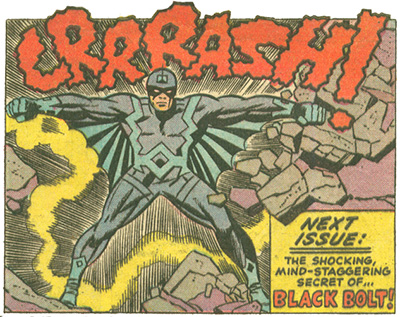
GORGON
Oh yes, and let’s not forget Gorgon, now making his second appearance, having been introduced in the previous issue of Fantastic Four, before the concept of “Inhumans” was ever mentioned. In that issue, in a shroud of mystery, Gorgon appears to be the bad guy, pursuing Medusa, who is desperately trying to avoid him. Now we have greater clarity on that situation, proving once again that in Marvel Comics (as in life), everything is not always as it initially seems. I vaguely remember Gorgon from the TV series as someone with a killer instep, but beyond that, he did not make much of an impression. He struck me as more of the strong, silent type, a fighting machine, less chatty, less emotional. So that’s probably why he didn’t make that much of an impression on me. And you know me, I’m all about the emotion—human, or Inhuman, as the case may be.
So I like the idea of this entirely new race of beings. I like the family atmosphere, the loyalty, commitment and purpose of the group, as well as the potential for exciting new storylines. Of one thing, however, I’m already certain: no matter how often we’ll hear them referred to as “Inhumans,” the personalities and interactions between these Inhumans will surely lead to at least as much (if not more) expression of human emotion as any other characters we’ve met so far.
| Want to read this comic on your computer? Marvel has a scan! Want to own the story? Buy the Masterworks! |

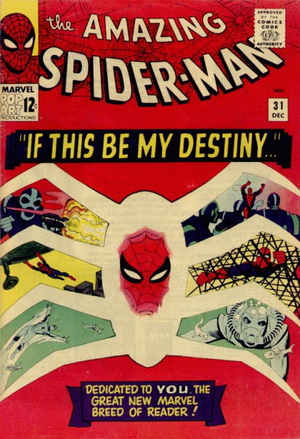
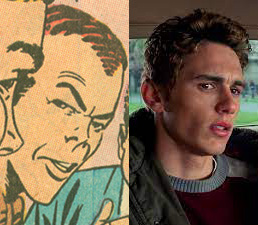 I first met Harry Osborne in 2002’s Spider-Man as Peter’s best friend, the son of an industrial tycoon…who also happens to be the Green Goblin. No telling how that’s going to play out in the 1960’s comics, but this Harry appears more a professor than student, with his bow tie and receding hairline. Again, this might be one of those “looking across the gulf of time” situations, but give me James Franco any day!
I first met Harry Osborne in 2002’s Spider-Man as Peter’s best friend, the son of an industrial tycoon…who also happens to be the Green Goblin. No telling how that’s going to play out in the 1960’s comics, but this Harry appears more a professor than student, with his bow tie and receding hairline. Again, this might be one of those “looking across the gulf of time” situations, but give me James Franco any day!
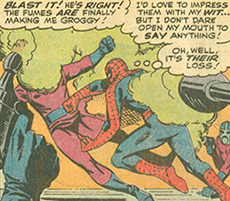 former girlfriend Liz Allan, rather than embracing the exciting co-ed opportunities of college life. I wouldn’t be surprised if we don’t actually see a lot of change in Flash; after all, juvenile stupidity is at the core of his character.
former girlfriend Liz Allan, rather than embracing the exciting co-ed opportunities of college life. I wouldn’t be surprised if we don’t actually see a lot of change in Flash; after all, juvenile stupidity is at the core of his character. 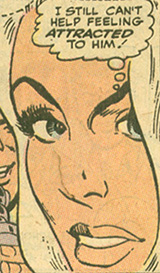 Is this going to continue? Will Spider-Man also evolve and mature, or forever act out as the flippant unflappably annoying foe that he is to the criminal element? Only time will tell…
Is this going to continue? Will Spider-Man also evolve and mature, or forever act out as the flippant unflappably annoying foe that he is to the criminal element? Only time will tell…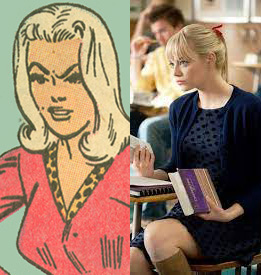 I know Gwen Stacy from the The Amazing Spider-Man (2012). Russ has commented that Emma Stone as Gwen Stacy was impeccable casting. Trusting his judgement as much as I trust the track record of Marvel movie casting, I will not dispute. Gwen doesn’t look too bad in closeups, but her behavior here hasn’t yet won my heart (as it has Russ’s), and honestly…I can’t stop anxiously waiting to learn more about Mary Jane!
I know Gwen Stacy from the The Amazing Spider-Man (2012). Russ has commented that Emma Stone as Gwen Stacy was impeccable casting. Trusting his judgement as much as I trust the track record of Marvel movie casting, I will not dispute. Gwen doesn’t look too bad in closeups, but her behavior here hasn’t yet won my heart (as it has Russ’s), and honestly…I can’t stop anxiously waiting to learn more about Mary Jane!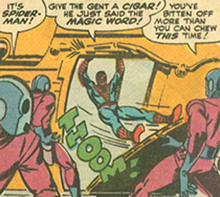 After all, we’ve had villains named Mastermind, the Puppet Master, the Crime-Master, Master Mold… Am I simply being my usual forgetful self, unable to figure it out? It’s not until we get to the last page that the Master Planner reveals that he and Spider-Man have not met before, so I finally feel better about myself.
After all, we’ve had villains named Mastermind, the Puppet Master, the Crime-Master, Master Mold… Am I simply being my usual forgetful self, unable to figure it out? It’s not until we get to the last page that the Master Planner reveals that he and Spider-Man have not met before, so I finally feel better about myself. 

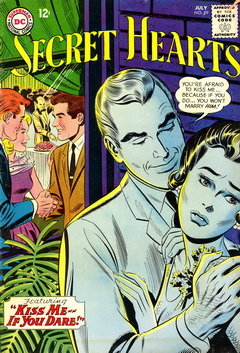
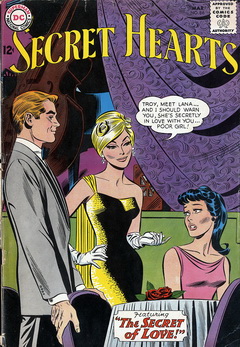
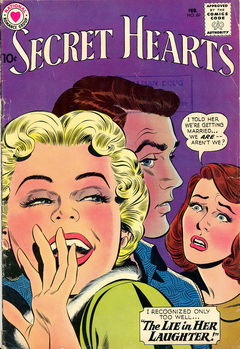
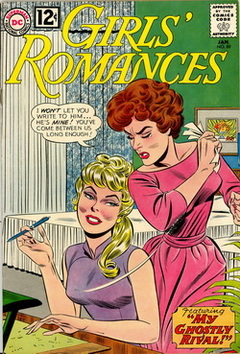
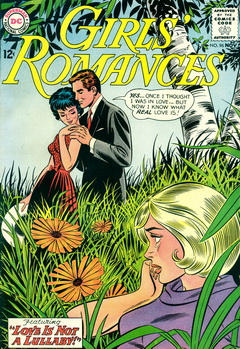

 However, having said all this, and despite all his previous works in the Romances, I must say I find some of his fashion choices questionable.
However, having said all this, and despite all his previous works in the Romances, I must say I find some of his fashion choices questionable. Or is this just me, looking backwards from 57 years in the future? (Case in point: Uhura’s go-go boots and mini skirt?)
Or is this just me, looking backwards from 57 years in the future? (Case in point: Uhura’s go-go boots and mini skirt?)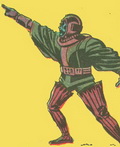 And while we’re at it: What is it with Kang’s boots? Did Romita’s background of drawing women in fancy outfits lead him to dress Kang in those ridiculously tall boots? They must be unbearably hot and uncomfortable! Or, is it for protection, like armor? What is the purpose? Those crazy boots are a distraction, drawing me out of the story, making me question either the artist or the character…or both.
And while we’re at it: What is it with Kang’s boots? Did Romita’s background of drawing women in fancy outfits lead him to dress Kang in those ridiculously tall boots? They must be unbearably hot and uncomfortable! Or, is it for protection, like armor? What is the purpose? Those crazy boots are a distraction, drawing me out of the story, making me question either the artist or the character…or both.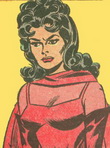 Even if some others have not done a great job with her face and hair, her frame has always looked, shall we say, “robust.” The Narrator misses the boat on this one.
Even if some others have not done a great job with her face and hair, her frame has always looked, shall we say, “robust.” The Narrator misses the boat on this one.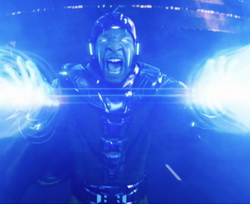 villainous in the Loki Disney+ series had not yet begun to guess what a menace this guy will be. Apparently, you can kill him, but…so what? An alternate version will just appear in any universe at any time. He’s worse than
villainous in the Loki Disney+ series had not yet begun to guess what a menace this guy will be. Apparently, you can kill him, but…so what? An alternate version will just appear in any universe at any time. He’s worse than  So Kang wants revenge on “the Avengers,” even though almost all the individual members have changed. He feels he’s been humiliated by “the Avengers” and just wants to restore his dignity by putting this group in their place. At first, this seems juvenile and illogical, but then I remember…football. Every week, we root for and against certain football teams, not based solely upon the threat they pose to our team this season, but because we are still harboring grudges from previous years—even though those players and even coaches are long gone. So I’ll give this to Kang. Perhaps illogical and petty, but somehow oddly…dare I say it?…human.
So Kang wants revenge on “the Avengers,” even though almost all the individual members have changed. He feels he’s been humiliated by “the Avengers” and just wants to restore his dignity by putting this group in their place. At first, this seems juvenile and illogical, but then I remember…football. Every week, we root for and against certain football teams, not based solely upon the threat they pose to our team this season, but because we are still harboring grudges from previous years—even though those players and even coaches are long gone. So I’ll give this to Kang. Perhaps illogical and petty, but somehow oddly…dare I say it?…human.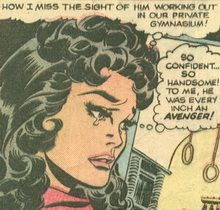 It’s hard to believe our outstanding hero would think this way, unless he was totally drunk on that sweet lemonade. And I wonder: if he only knew how much Wanda missed the sight of him working out in their private gymnasium, would that change his attitude?
It’s hard to believe our outstanding hero would think this way, unless he was totally drunk on that sweet lemonade. And I wonder: if he only knew how much Wanda missed the sight of him working out in their private gymnasium, would that change his attitude? 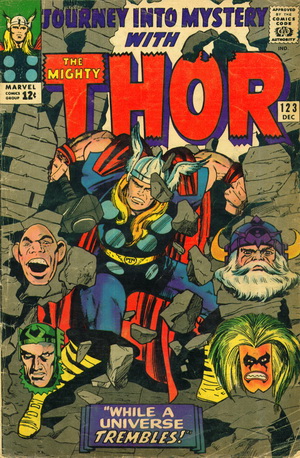
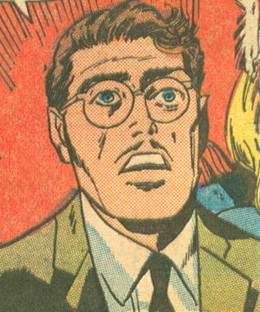 “You can even erase it from my memory!” On one level, that doesn’t actually make sense, but on another level, even if he can’t remember it, the truth would still exist that “I would have done what no newsman before me has ever done!”
“You can even erase it from my memory!” On one level, that doesn’t actually make sense, but on another level, even if he can’t remember it, the truth would still exist that “I would have done what no newsman before me has ever done!” 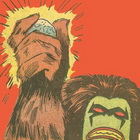 misplaced Norn Stone from issue #120?—Helpful Chrissy…). I never really thought Stan and Jack simply forgot about it, and now at last, it reappears, triggering a new dramatic predicament on planet Earth.
misplaced Norn Stone from issue #120?—Helpful Chrissy…). I never really thought Stan and Jack simply forgot about it, and now at last, it reappears, triggering a new dramatic predicament on planet Earth. Back in Asgard, the Absorbing Man reveals to Odin his plan to “rule the whole blamed Universe!” Sounds to me like a consuming desire for absolute power! Incidentally, the adjective “blamed” is something I’ve seen before in Marvel Comics, and I’m not 100% sure what it means, but my best guess is that it’s a polite way of saying “dammed.” But there’s one thing I know for sure: we don’t need anyone ruling the whole blamed Universe who uses profanity on any level to explain their goals. And while we’re at it, let’s also not have rulers of the Universe (or anything else, for that matter…) who refer to their opponents by “cute” nicknames like “Pops,” “Goldilocks” and “Ol’ Whitey.” Sigh…
Back in Asgard, the Absorbing Man reveals to Odin his plan to “rule the whole blamed Universe!” Sounds to me like a consuming desire for absolute power! Incidentally, the adjective “blamed” is something I’ve seen before in Marvel Comics, and I’m not 100% sure what it means, but my best guess is that it’s a polite way of saying “dammed.” But there’s one thing I know for sure: we don’t need anyone ruling the whole blamed Universe who uses profanity on any level to explain their goals. And while we’re at it, let’s also not have rulers of the Universe (or anything else, for that matter…) who refer to their opponents by “cute” nicknames like “Pops,” “Goldilocks” and “Ol’ Whitey.” Sigh… motivations of the Absorbing Man, which leads to this awesome fight for Odin’s scepter, during which Loki, in his typical Asgardian-centric view, loudly proclaims that by ruling Asgard, he will “rule the universe!” And, there it is again: absolute power.
motivations of the Absorbing Man, which leads to this awesome fight for Odin’s scepter, during which Loki, in his typical Asgardian-centric view, loudly proclaims that by ruling Asgard, he will “rule the universe!” And, there it is again: absolute power.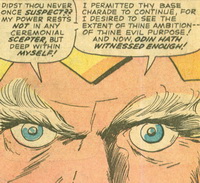 Absolute power, REAL power, is Odin having the wisdom to realize what’s about to happen, and the patience to wait for events to play out, for “The play is not yet ended!”
Absolute power, REAL power, is Odin having the wisdom to realize what’s about to happen, and the patience to wait for events to play out, for “The play is not yet ended!” 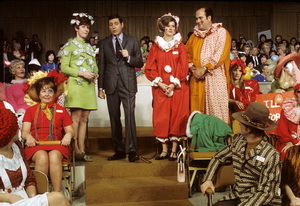 If Thor has the power to make people forget, why “make a deal” with Hobbs to take him to Asgard, then wipe his memory afterwards? Why not just do his hocus pocus? “Let’s not and say we did.”
If Thor has the power to make people forget, why “make a deal” with Hobbs to take him to Asgard, then wipe his memory afterwards? Why not just do his hocus pocus? “Let’s not and say we did.” “The Jaws of the Dragon!”
“The Jaws of the Dragon!”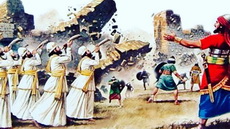 Whether a musical note, or the power of language expressed in the Bible or a comic book, we should remain well aware of the absolute power words can have to change our lives, our world…even the whole blamed universe.
Whether a musical note, or the power of language expressed in the Bible or a comic book, we should remain well aware of the absolute power words can have to change our lives, our world…even the whole blamed universe.












